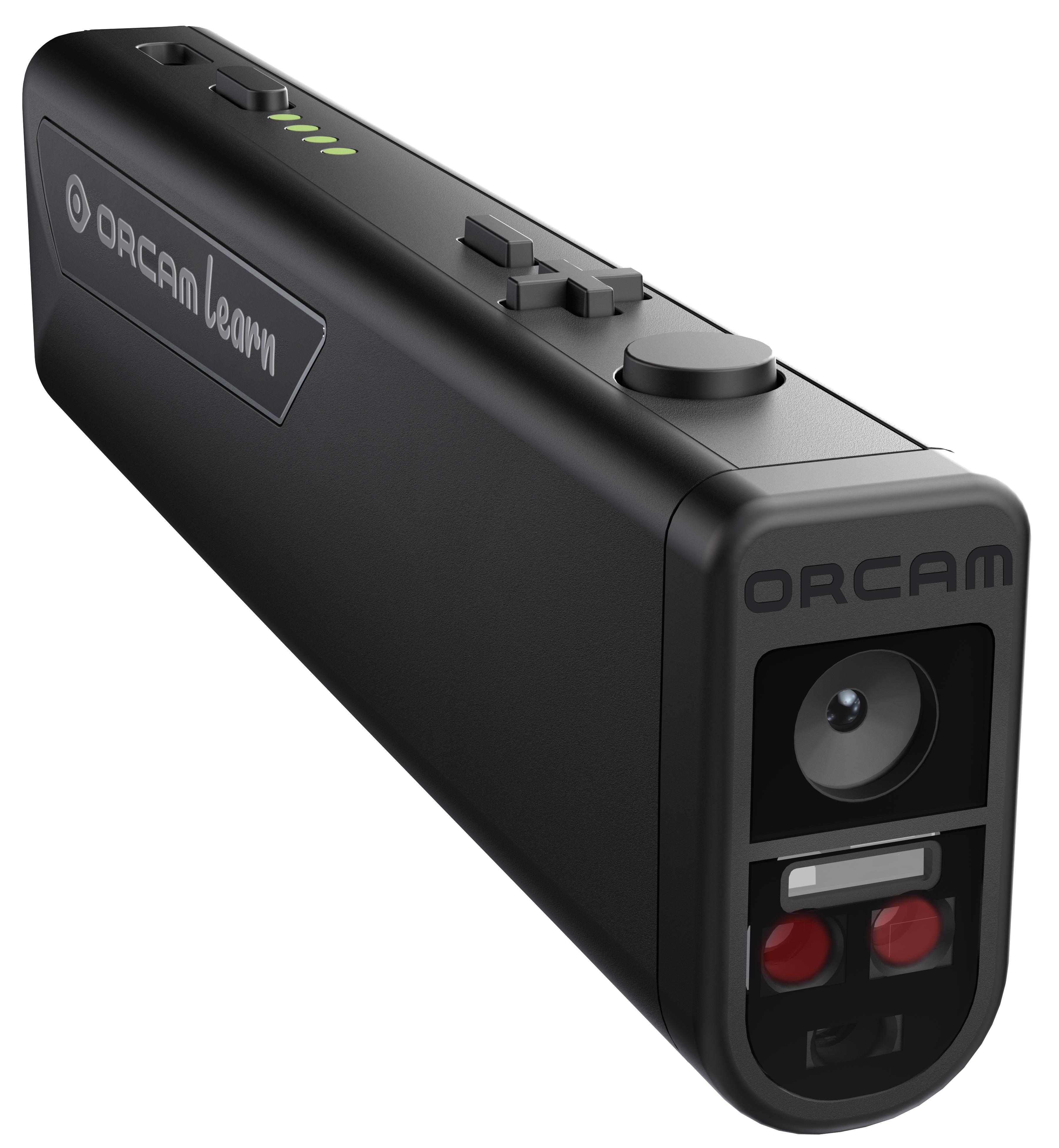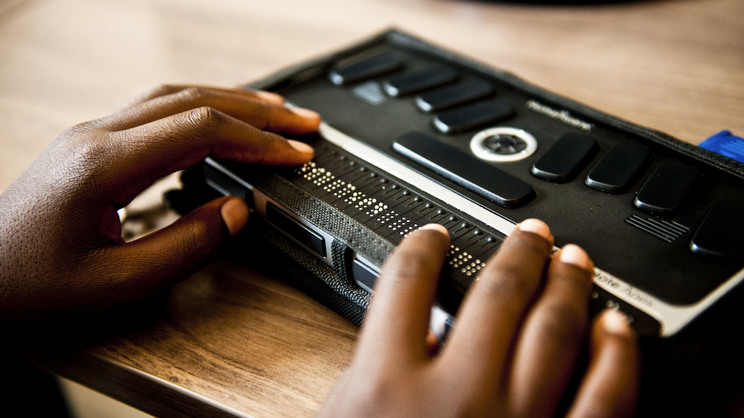A Guide to Life-Changing Assistive Innovation for the Blind and Visually Impaired
The improvement of assistive technology has ushered in a transformative era for individuals who are aesthetically impaired or blind, offering tools that enhance autonomy and enrich daily experiences. Technologies such as smart navigation gadgets and AI-driven applications are redefining how individuals interact with their surroundings, while available reading remedies and clever home technologies guarantee to more elevate the quality of life.
Smart Navigation Tools
Smart navigating tools are transforming the method people that are visually impaired or blind communicate with their setting. These sophisticated technologies, which integrate GPS, audio feedback, and haptic signals, provide customers with vital information concerning their surroundings, improving their freedom and movement.
One famous example is making use of wise walking canes geared up with sensors that spot obstacles and offer real-time comments through resonances or audio hints. These devices allow customers to browse intricate settings, such as busy roads or crowded public rooms, with enhanced self-confidence. Additionally, wearable gadgets, such as clever glasses, are being established to aid in recognizing faces, checking out message, and determining items, better increasing the user's spatial understanding.
In addition, smart navigation devices are increasingly integrating fabricated intelligence to analyze information and adapt to users' choices. This tailored technique not only enhances navigation effectiveness but also promotes a feeling of empowerment amongst customers. As technology continues to development, the possibility for smart navigation tools to produce a much more comprehensive and obtainable globe for people who are aesthetically damaged or blind remains promising, ultimately reshaping their daily experiences and interactions.
Cutting-edge Mobile Applications
Mobile applications are becoming effective devices for assisting people who are aesthetically impaired or blind, providing a series of functionalities that enhance daily living. These apps harness advanced innovation to assist in everyday jobs, enhance availability, and advertise independence.
One category of innovative mobile apps concentrates on aesthetic acknowledgment. Applications like Be My Eyes attach customers with sighted volunteers via video clip phone calls, making it possible for real-time aid for jobs such as reviewing tags or navigating unknown settings. In a similar way, apps like Seeing AI utilize expert system to define environments, checked out text, and recognize things, supplying individuals with essential details at their fingertips.
One more significant location is navigating and alignment. Apps such as Aira and Nearby Traveler supply audio assistance, aiding individuals navigate metropolitan spaces effortlessly. They use customized aid, permitting for a more confident expedition of the environment.
In addition, health and wellness and health apps provide to details demands, such as drug administration and fitness monitoring. These applications aim to foster an alternative strategy to wellness, making certain that users can keep their wellness independently.
Wearable Assistive Instruments
Wearable assistive devices represent a substantial development in innovation created to support people that are visually impaired or blind. These devices improve mobility and self-reliance by giving real-time feedback about the surrounding environment. Amongst one of the most notable wearable modern technologies are clever glasses outfitted with sensors and video cameras, which can determine obstacles and relay critical details with audio signs.

One more innovative option consists of wrist-worn devices that make use of ultrasonic waves to detect barriers and supply navigational aid. These devices frequently feature personalized settings, allowing customers to tailor the alerts to their certain demands.
The integration of expert system in wearable assistive technology is additionally notable, as it consistently improves the precision and responsiveness of these devices. On the whole, wearable assistive gadgets are transforming the lives of the blind and aesthetically impaired, promoting greater autonomy and boosting high quality of life via cutting-edge options.
Accessible Checking Out Solutions
Accessible analysis solutions play an important role in enabling people who are blind or aesthetically impaired to engage with message throughout different formats. These solutions include a series of devices and innovations developed to boost reading experiences, from standard print materials to electronic material.
One prominent service is Optical Character Acknowledgment (OPTICAL CHARACTER RECOGNITION) technology, which converts published message right into digital format, enabling customers to pay attention to or read the material using display viewers. Additionally, specialized e-readers furnished with text-to-speech capacities offer personalized analysis experiences, enabling individuals to adjust font sizes and background colors for improved visibility.
Another efficient technique is braille display screens, which supply responsive responses by converting digital message into braille. This enables individuals to check out touch, promoting higher self-reliance and access to literature. Moreover, mobile applications made for checking out checked papers or publications can encourage customers with instantaneous access to a substantial collection of materials.

Smart Home Technologies
Smart home technologies have revolutionized the means individuals that are blind or visually damaged connect with their living atmospheres, enhancing both self-reliance and safety. These ingenious services take advantage of automation and connectivity to produce an obtainable living space customized to the demands of users.
Smart speakers and voice-activated aides provide hands-free control over different devices, permitting customers to change temperature, lighting, and safety and security procedures via easy voice commands. This functionality lessens reliance on sighted aid and promotes a feeling of freedom. Furthermore, wise lighting systems can be tailored to deliver auditory comments or responsive cues, making it possible for people to browse their homes more efficiently.
Additionally, protection systems outfitted with smart electronic cameras and sensors can send out real-time notifies to users, boosting personal safety without demanding visual confirmation. Automated door locks offer satisfaction, enabling customers to secure their homes easily.
Incorporating wise home technologies not just improves daily living but likewise motivates social interaction through linked devices - Smart glasses for the visually impaired. With continuous improvements in assistive innovation, the future appears appealing, as more services will emerge to additional equip people who are blind or visually impaired, making certain an extra independent and inclusive way of living
Verdict
In final thought, the innovations in assistive modern technology for the blind and aesthetically damaged represent a substantial leap towards boosting self-reliance and high quality of life. Smart navigation tools, cutting-edge mobile applications, wearable gadgets, easily accessible analysis options, and clever home technologies jointly promote a comprehensive atmosphere. This combination of modern technology not just enhances movement and daily living however additionally empowers individuals to engage totally with their surroundings, advertising greater autonomy and engagement in society.
Advancements such as smart navigating devices and AI-driven applications are redefining just how users connect with their environments, while easily accessible analysis remedies and smart home innovations assure to further elevate the quality of life. As innovation proceeds to advancement, the potential for wise navigating tools to develop an extra available and inclusive globe for individuals who are aesthetically damaged or blind remains promising, ultimately reshaping their daily experiences and communications.
Wearable assistive devices represent a considerable innovation in innovation developed to support individuals who are blind or aesthetically damaged. Among the most significant wearable innovations are smart glasses equipped with sensing units and electronic cameras, which can identify obstacles and relay essential information with audio signs.
Smart navigation tools, innovative mobile applications, wearable gadgets, obtainable analysis options, and smart home innovations collectively promote an Braille displays and notetakers inclusive setting.